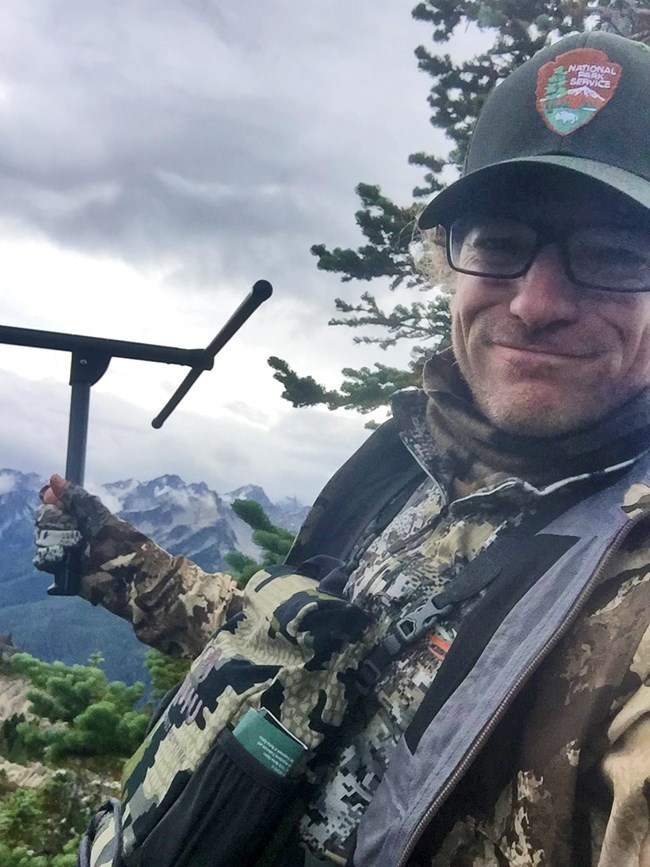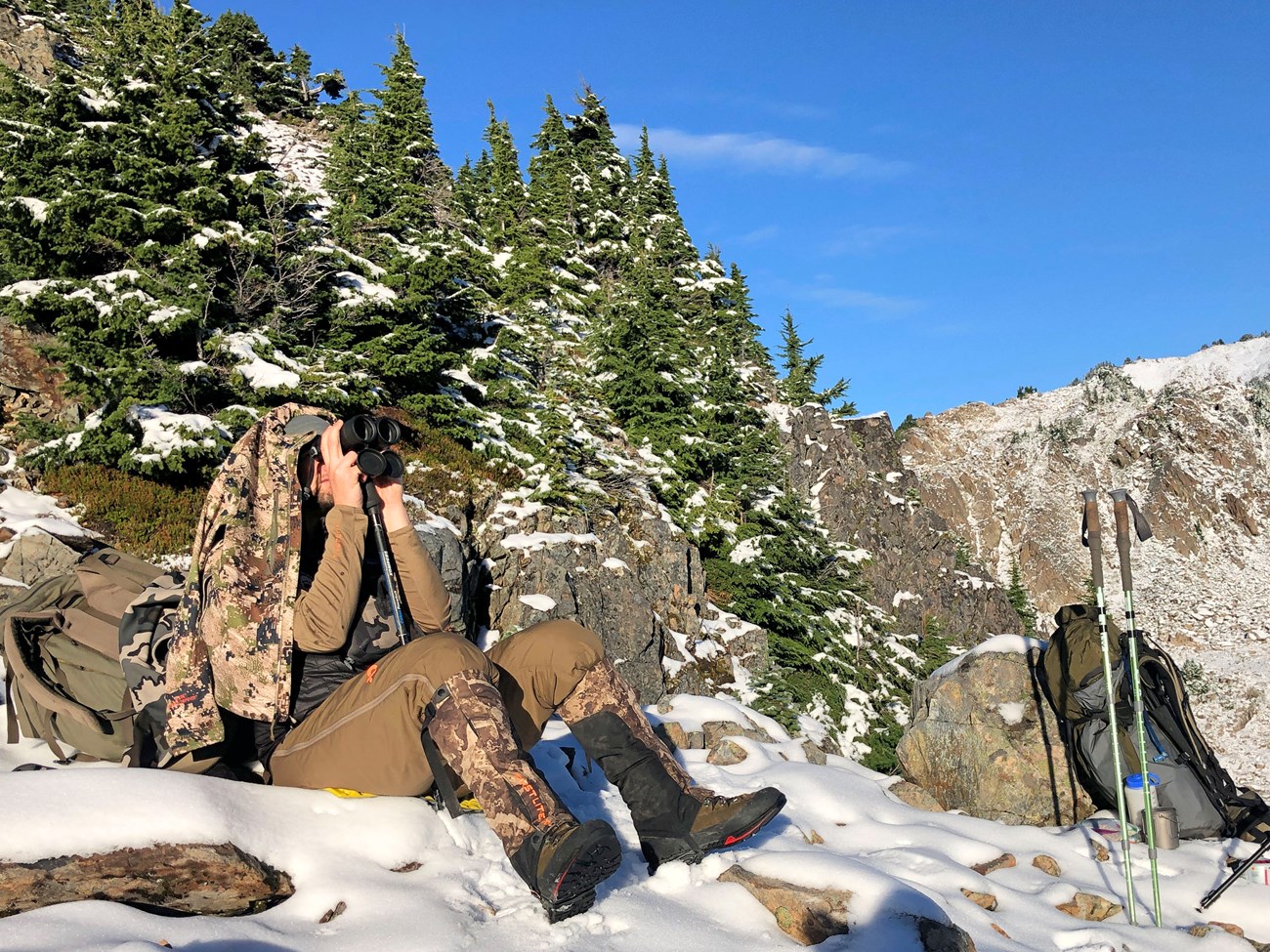Last updated: December 4, 2020
Article
Pinnacles National Park Biologist Shares Non-lead Ammunition Expertise with Olympic National Park Volunteers

NPS / Daniel Ryan
November 2020 - Sometimes, national parks are faced with a daunting challenge: removing ecologically disruptive, non-native mammals. Pinnacles National Park knows what it’s like. They have worked hard to successfully remove feral pigs. So when Olympic National Park needed to remove introduced mountain goats using non-lead ammunition, they sought the expertise of Pinnacles Invasive-Wildlife Biologist and Non-lead Ammunition Specialist Daniel Ryan. Daniel’s background includes using non-lead ammunition for lethal removal of feral pigs at Pinnacles. He has also done extensive work offering education and outreach to hunting and ranching communities on how to switch to a non-lead bullet. At Olympic, he helped to train the skilled volunteers that assisted in ground-based lethal removals this fall.
About 12 mountain goats were introduced to the Olympic mountain range in the 1920’s. As the population grew, native species and the broader alpine ecosystem began to suffer. In the 1970’s, with the goat population estimated at around 1,175 individuals, the National Park Service (NPS) decided to take action. In the 1980’s, the park began relocating hundreds of goats to the Cascade mountain range where they are native. Management of the goats stalled in the 90’s once the population in Olympic had dropped to around 300 animals. But by the early 2000’s, the goat population was increasing, and in 2018 it was estimated at around 725 individuals. In addition to ecosystem impacts, goats were displaying negative habituation behaviors around humans as they sought salt resources.
A new Mountain Goat Management Plan/EIS was released in 2018 with extensive public review. Under the new plan, management of goats included more relocations to the Cascade Range. Once capture operations were no longer safe or efficient, the park would switch to lethal removal. In August 2020, after 325 individuals had been relocated, staff from Olympic National Park determined that it was time. Capture efficiency and capture mortality had shifted enough to move to the lethal removal operation. In response to public comments, they opted to work with skilled volunteers for the first round of lethal removals. This was partly to reduce helicopter impacts in the backcountry and to reduce the number of carcasses left on the landscape. Over 1,200 groups of up to six applied. After initial evaluation and ranking, over 100 teams were determined to be very well qualified. Further evaluation by the NPS and Washington Department of Fish and Wildlife resulted in the selection of 21 groups consisting of 118 exceptionally qualified volunteers in the summer of 2020.

NPS / Daniel Ryan
Each volunteer had to pass a background check, physical fitness requirements, and a firearm proficiency evaluation. They were well prepared to work unsupported in the backcountry for 11-day rounds in Olympic's rugged terrain and extreme fall weather. And while all were skilled with the use of firearms in backcountry conditions, some volunteers were not familiar with non-lead ammunition, a NPS requirement for any wildlife removal work. As a result, the park brought Daniel in from Pinnacles as a technical advisor on the subject. He developed approved ammunition lists and led a well-received, multi-day volunteer training. The training at firing ranges gave participants the best opportunity to pass their firearm accuracy qualification with a new bullet, while also learning about the ballistics and bullet performance. Many expressed how excited they were to assist the park and ensure that, by using non-lead, they wouldn’t negatively impact native scavengers. One volunteer commented, “I can’t believe I didn’t know about this. I’ll never use a lead bullet again.”
The volunteers completed three rounds of ground-based removals during September and October. In total, they culled 31 goats from the park in extremely difficult terrain and weather conditions with no safety issues. They removed as many of the goats as they could, and collected important biological and observational data on the animals. Altogether, they contributed over 9,000 hours of highly skilled work while participating in the program. Daniel shadowed one of the teams in the last round to learn methods to improve future volunteer-assisted wildlife removal programs. He also communicated with the public in the high-visitation area where team was working. “These teams are really well vetted, and they are very professional in the field with the animals and the public. Olympic did a great job explaining this program and preparing their visitors ahead of time. All the interactions we had with visitors were very supportive and positive.” said Daniel.
The next stage of lethal removal will begin in 2021 and will switch to aerial operations. Two, 2-week aerial operations are planned for late July and early September of 2021.
For more information
- Pinnacles webpage: Lead Bullet Risks for Wildlife & Humans
- Olympic news release: Mountain Goat Removal Complete for 2020
- Contact Daniel Ryan regarding use of non-lead ammunition in wildlife removal, or for help with non-lead education, outreach or messaging.
